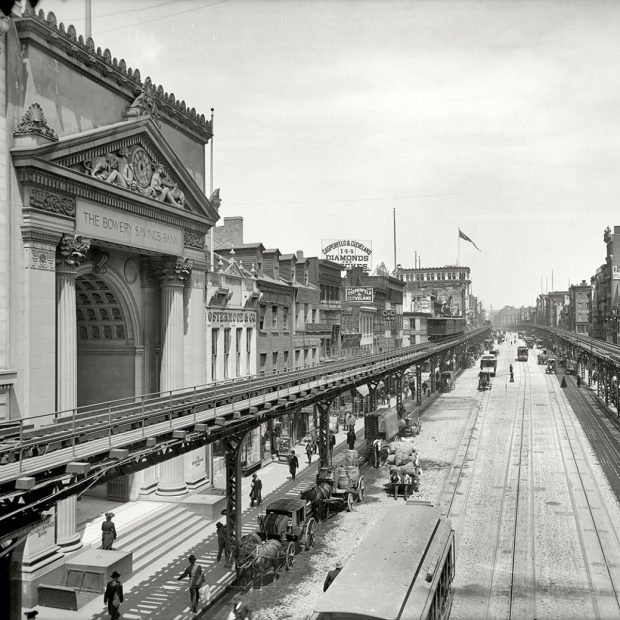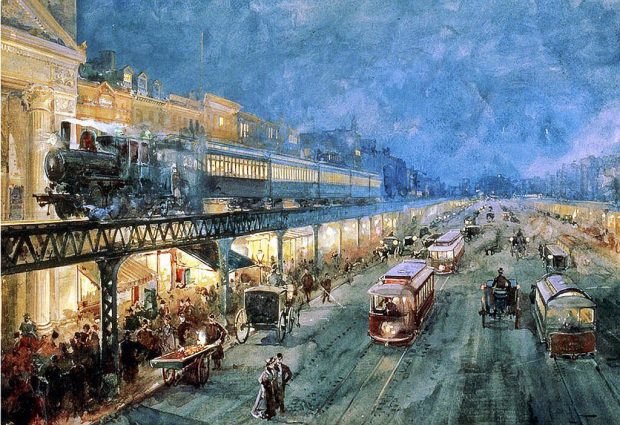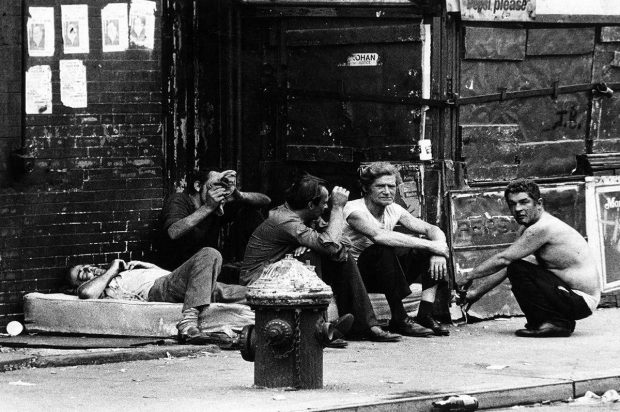
There is a story about a New Yorker who is released from prison after 20 years and finds Manhattan so changed that he no longer recognizes it. The feelings people have towards this constant renewal are mixed – it symbolizes vitality, but also a kind of rootlessness, the loss of reference points.

Bowery at Night – 1895 – William Sunday
The area in which one has lived for a few decades is becoming a trendy district, the old local pub is closing and is being replaced by a hip lounge, friends are moving away because rents are getting too high. Nowhere do you see this development more extreme than on a street with the unusual name ‘The Bowery’ (you can recognize non-New Yorkers by the fact that they say Bowery Street ’or just Bowery’).
READ: 222 Bowery: The Most Interesting Artist Commune in New York History
The Bowery, which was laid out by Native Manhattan people, the Lenape Indians, has one of the longest stories on the streets of New York City. During Dutch colonial times in the 17th century, residents used the bowerij to get from Fort Amsterdam on the southern tip of Manhattan to Peter Stuyvesant’s estate. 250 years before Rudy Guiliani, Stuyvesant, who managed the region, which was then called Nieuw Nederland, as general director for the Dutch, was already known as a cleaner – as someone who brought order to the settlement, but also someone during whose tenure she was was lost to the English.

The Bowery in the 1970s – Photo Leland Bobbe
The next generations found idyllic conditions, one saw fertile lands, beautiful houses, and magnificent trees. Theaters began to settle in the early 18th century, drawing people from all over New York City. After the civil war, the theaters were replaced by fairground stages with sword swallowers, lion tamers, dwarfs, and burlesque dancers, which were then fashionable.
The decline of the Bowery began in 1878 with the construction of the elevated railway. Hot oil constantly dripped down the route and made a passage very unpleasant for pedestrians. The museums and theaters soon packed their things, nothing else took their place, and The Bowery gradually deteriorated. This change for the worse was also facilitated by the fact that the street at the southern end borders Five Points – a poor area known for its brothels, bars, and beer gardens. Here gangs dominated the scene and most of the townspeople avoided the Bowery, who lost their reputation as a bum area with the settlement of shabby houses. Martin Scorcese captured this atmosphere well in his film Gangs of New York.
In the first half of the 20th century, more and more homes were opened for mostly alcoholic homeless people. The Bowery became a symbol of the ultimate descent, a terminus. It will end on The Bowery, according to someone whose future prospects were judged to be very bleak. For decades the word ‘Bowery’ was equated with the life of a bum, and not just in New York. The miserable reputation of the Bowery meant that there were separate tours for curious people from other parts of the United States in the 1950s and 1960s. In winter, these tours only started after police patrols ensured that there were no bodies of frozen homeless people on the street. Farther away than on The Bowery, you could hardly be anywhere from the conformist petty bourgeoisie that dominated life in much of the United States at the time.
READ:Long Live Rock ‘n’ Roll: On the Trail of New York Rock History
The otherness then also attracted many artists, some of whom later became world-famous, such as the writer William Burroughs, the painter Mark Rothko and the photographer Nan Goldin. In 1970, Paul Morrissey captured this neighborhood forever on celluloid for Andy Warhol’s Trash. During this time, the American punk movement began in the CBGB music club on the Bowery, and the careers of later world-famous bands such as Blondie, the Ramones, and Talking Heads began here. The legendary club had to close in 2006 because it could no longer afford the rising rents.

2021 – Bowery Hotel, luxury accommodation
READ: How High is the Humidity in Dubai: The Emirate of Dubai Has a Very High Humidity
And 2021? Today The Bowery – after it was rediscovered by young trendsetters in the 1990s – is one of the coolest and most expensive addresses in all of New York – with correspondingly high rents, expensive boutiques, chic restaurants, or the New Museum, the most expensive new museum building in decades. Large parts of the old population have gradually disappeared, and although there are still a few homeless shelters, more European tourists can be seen here now, laden with shopping bags, returning to one of the newly created high-priced designer hotels than bums who once characterized The Bowery.
Like us on Facebook for more stories like this: